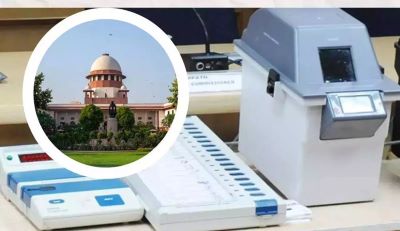Context
The recent judgment on the Electronic Voting Machine (EVM) and Voter Verifiable Paper Audit Trail (VVPAT) case in India has sparked a wave of disappointment and debate among citizens and experts alike. The essence of this discussion delves into the realm of statistical principles and their application in ensuring the integrity of electoral processes. Drawing a parallel to historical events, notably the curious case of Indiana's attempt to legislate the value of pi, we are reminded of the fundamental premise that truths in science, mathematics, and statistics cannot be arbitrarily mandated by legislative or judicial bodies.
In the context of VVPAT-based audit of EVMs, the Supreme Court of India's directive regarding a uniform sample size for each Assembly Constituency has come under scrutiny for its departure from established statistical sampling theory. While VVPAT verification serves to confirm that votes have been recorded as cast, it does not eliminate the risk of EVM malfunction or manipulation, necessitating a robust audit mechanism aligned with statistical principles.
Challenges with the Court's Directive
The Court's judgment, while well-intentioned, falls short in addressing key aspects crucial for ensuring the efficacy of the audit process. By prescribing a uniform sample size without specifying the population of EVMs to which it applies, the judgment overlooks foundational principles of statistical sampling theory. Moreover, the lack of clarity on the next steps in the event of a defective EVM further compounds the ambiguity surrounding the audit protocol.
Critics argue that the prescribed sample size is inadequate to detect potential discrepancies with the desired level of confidence. Statistical analysis reveals that the probability of failing to detect a defective EVM remains unacceptably high under the Court-mandated sample size, undermining the very purpose of VVPAT verification. While the Election Commission of India (ECI) has cited a lack of instances of mismatch between EVM and VVPAT counts, this claim fails to address the systemic flaws inherent in the current audit framework.
Addressing the Gaps
To ensure the integrity of the electoral process, it is imperative to implement a statistically sound VVPAT-based audit system capable of detecting discrepancies with a high degree of accuracy. This entails defining the population of EVMs and establishing clear protocols for handling defective units identified during the audit process. Rather than relying on arbitrary percentage samples, which offer no guarantee of accuracy, a statistically rigorous approach must be adopted to instill confidence in the electoral process.
The proposed management-by-exception approach advocates for conducting the matching exercise at the outset of the counting day, with results based on EVM counts where a perfect match is found. In cases of mismatch, manual counting of VVPAT slips for the entire population of EVMs should be undertaken, with results determined based on the VVPAT count. This approach not only upholds statistical principles but also strikes a balance between efficiency and accuracy in the audit process.
Conclusion
In conclusion, the judgment on the EVM-VVPAT case underscores the importance of aligning electoral processes with fundamental principles of statistics and quality control. While the intent to safeguard the integrity of the electoral process is commendable, the current approach falls short of achieving this objective due to its departure from established statistical norms. Moving forward, there is a pressing need to revise the audit protocol to ensure a statistically sound and transparent process that inspires confidence among citizens and stakeholders alike.
By embracing a management-by-exception approach and adhering to rigorous statistical sampling principles, India can establish a robust VVPAT-based audit system capable of detecting and addressing any discrepancies with a high degree of accuracy. Only through such measures can we uphold the sanctity of the democratic process and ensure that every vote counts.
|
Probable Questions for UPSC Mains Exam 1. Question: Discuss the significance of statistical sampling theory in ensuring the integrity of electoral processes, with reference to the recent judgment on the EVM-VVPAT case in India. Evaluate the adequacy of the prescribed sample size and propose alternative approaches to enhance the accuracy and transparency of the audit process. (10 marks, 150 words) 2. Question: The EVM-VVPAT case judgment has sparked a debate regarding the role of statistical principles in shaping electoral policies and procedures. Analyze the challenges associated with the Court's directive on uniform sample size for VVPAT-based audits, highlighting the implications for electoral integrity and public confidence in the democratic process. Suggest measures to address these challenges and reinforce the statistical soundness of the audit framework. (15 marks, 250 words) |
Source – The Hindu







